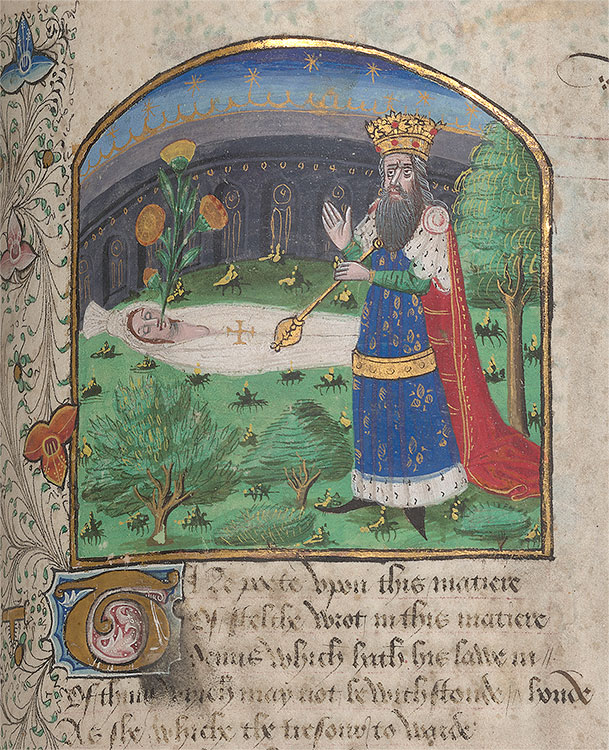Fourteenth-century English poet John Gower took Ovid’s Metamorphoses as the main source for his Confession of the Lover, but he made changes of his own to the first-century Roman’s magnum opus. In Gower’s retelling, King Orchamus learns that his daughter, Leucothoe, has been seduced by the sun god, Phebus, and he orders her buried alive to warn other maidens to guard their virginity. A saddened Phebus transforms his late beloved into a sunflower (as opposed to Ovid’s frankincense), which will always face the sun. In the miniature, the slain Leucothoe lies in her shroud. It opens at her head, allowing a sunflower to bloom, while Orchamus swings incense over her grave. Today, a genus of about fifty species of flowering plants bears the name Leucothoe.
John Gower, Confessio amantis, in Middle English and Latin, England, [London], ca. 1470, possibly commissioned for Elizabeth Woodville, queen of England and wife of King Edward IV; MS M.126, fol. 129 (det.). Purchased by J. Pierpont Morgan (1837–1913), 1903.

